Precast Assembled Road Paving Technology: Progress and Prospects
Abstract
:1. Introduction
2. Methodology
3. PCCP Technology
3.1. Precast Systems for Intermittent Rehabilitation of Cement Concrete Pavements
3.1.1. Super-Slab System
3.1.2. Stitch Slab System
3.1.3. Michigan Slab System
3.2. Precast Systems for Continuous Paving of Cement Concrete Pavements
3.2.1. JPCP Systems
3.2.2. PPCP Systems
3.2.3. ICPCP Systems
3.3. Technical Issues to Be Considered in PCCP Systems
3.3.1. Panel Reinforcement
3.3.2. Production Rates
3.3.3. Load Transfer Efficiency
3.3.4. Panel Support Condition
3.3.5. Sealing of Pavement Joints
4. PCFP Technology
4.1. Determination of Test Method and Evaluation Indices for the Bending Property of PCFP
4.2. Research on PCFP Technology
4.2.1. Asphalt-Based PCFP
4.2.2. PU-Based PCFP
4.2.3. Epoxy Resin-Based PCFP
4.2.4. Cement-Based PCFP
4.3. Environmental Benefits of PCFP Technology
4.3.1. Avoiding the Environmental and Human Health Hazards of Asphalt Fumes
4.3.2. Energy Efficiency and Carbon Reduction
5. Conclusions
- At present, the research and application of precast pavement technology is mainly based on PCCP technology, the essence of which is to improve the strength, durability, and other road performance aspects of precast cement concrete slabs to meet the needs of economic development. PCFP technology, on the other hand, has not been used on a large scale due to factors such as poor durability and technical limitations.
- The Super-Slab and Michigan systems have a wide range of applications. PPCP systems are considered long-life concrete pavements owing to their superior durability, constructability, and cost-effectiveness and are becoming the dominant paving systems.
- To prevent voids in assembled pavements, a secondary leveling of the spliced subgrade using a leveling material is required. Sand cushions, dry-mixed mortar, and self-leveling mortar are all premium base-leveling materials. In view of the engineering application, it is recommended to use a sand cushion for base leveling.
- The load transfer mechanisms for assembled pavement joints are categorized into dowel bars, tongue-and-groove joints, and aggregate interlocks. Dowel bars are recommended for assembled pavements with heavy driving loads or high performance. Aggregate interlocks should be utilized for temporary paved roads or low-performance assembled pavements. Tongue-and-groove joints are to be avoided because of the limitations of the concrete material and its structural properties.
- Considerable attention should be paid to the sealing of precast pavement joints. On the one hand, the selection of appropriate joint treatment materials can enhance the bonding effect between the dowel bar and the panel; on the other hand, sealing the joints prevents rainwater from penetrating the base and ensures the durability of the subgrade and joints.
- PCFP technology is still quite immature, and the main problem is that durability is not guaranteed. More effectively balancing the bending of PCFP with the pavement performance is essential. The review provided in this paper demonstrates that asphalt-based and PU-based materials are still the mainstream binders for PCFP, but the poor durability of asphalt-based pavements and the high cost of PU-based pavements have always limited the popularization and application of PCFP technology. Thus, balancing the pavement performance of PCFP with cost-effectiveness is also a major challenge.
6. Future Work
- The authors believe that the future application of precast technology in pavement construction will still be dominated by PCCP and PCFP technology, but more advanced precast pavement technologies may exist, such as precast slab-type asphalt pavements. However, the difficulty of this technology lies in how to determine the dimensions of the slab-type asphalt pavement and how to deal with the gaps between the slabs.
- Regarding the problem of the poor durability of PCFP technology, it is necessary to carry out a comprehensive evaluation of the road performance of PCFP and to study the interface contact behavior of PCFP structures under the action of tire loads as well as to optimize the design and improvement of carpet paving materials on this basis. The problem of a large radius of curvature of PCFP can be solved by reducing the thickness of a pavement and laying geotextiles with high tensile properties at the bottom.
- Further mechanization and automation of precast pavement technology will be achieved using complete sets of mechanized equipment to perform operations such as original pavement breaking, substrate disposal and leveling, and precast pavement paving.
- Precast pavement has a large development space, as a carrier, and will be integrated with increasingly advanced functions. For instance, the road surface anti-skid property, drainage, noise reduction, exhaust degradation, and energy collection and storage will be improved, which is of great significance for the current stage of road maintenance, traffic safety, and energy collection in the road area.
- By exploring precast pavement as a substrate to promote digital road infrastructure construction, pavement can be assembled rapidly and accurately, and the deployment of sensing equipment can be standardized, thus realizing the informatization of road infrastructure. The collection of data such as vehicle speed, traffic flow, grounding pressure, temperature, humidity, and rain and snow conditions on roadways lays the foundation for future human–vehicle–road interaction and traffic flow control and diversion.
Author Contributions
Funding
Institutional Review Board Statement
Informed Consent Statement
Data Availability Statement
Conflicts of Interest
References
- Tomek, R. Advantages of precast concrete in highway infrastructure construction. Proc. Eng. 2017, 196, 176–180. [Google Scholar] [CrossRef]
- Li, W.; Huang, J.; Li, R.; Cao, L.; Li, X.; Feng, L.; Chen, S. (110)-Bridged nanoblocks self-assembled VS4 hollow microspheres as sodium-ion battery anode with superior rate capability and long cycling life. Chem. Eng. J. 2020, 384, 123385. [Google Scholar] [CrossRef]
- Saleem, M.A.; Zafar, M.N.; Saleem, M.M.; Xia, J. Recent developments in the prefabricated bridge deck systems. Case Studies Constr. Mater. 2021, 15, e00750. [Google Scholar] [CrossRef]
- Zhang, J.; Weng, X.; Yang, B.; Li, Y.; Liu, J.; Jiang, L. Bonding characteristics of grouting layer in prefabricated cement concrete pavement. Constr. Build. Mater. 2017, 145, 528–537. [Google Scholar] [CrossRef]
- Qu, B.; Weng, X.Z.; Zhang, J.; Mei, J.J.; Guo, T.X.; Li, R.F.; An, S.H. Analysis on the deflection and load transfer capacity of a prefabricated airport prestressed concrete pavement. Constr. Build. Mater. 2017, 157, 449–458. [Google Scholar] [CrossRef]
- Zhang, Y.; Ma, T.; Yang, H.; Li, Z.; Wang, Y. Simulation and experimental study on the energy performance of a pre-fabricated photovoltaic pavement. Appl. Energ. 2023, 342, 121122. [Google Scholar] [CrossRef]
- Song, W.L.; Cao, M.Y.; Pang, X.; Ren, Y. Key technology of large size precast concrete slab pavement. J. Chongqing Jiaotong Uni. 2018, 9, 28–33. [Google Scholar]
- Li, D. Research on the Structural Design of Precast Concrete Panels for Rapid Repair of Cement Pavements. Master’s Thesis, Southeast University, Nanjing, China, 2015. [Google Scholar]
- Editorial Board of the Chinese Journal of Highways, Review of academic research on pavement engineering in China—2020. China J. Highway. 2020, 10, 1–66.
- Vaitkus, A.; Andriejauskas, T.; Šernas, O.; Čygas, D.; Laurinavičius, A. Definition of concrete and composite precast concrete pavements texture. Transport 2019, 3, 404–414. [Google Scholar] [CrossRef]
- Olidis, C.; Swan, D.J.; Saeed, A.; Mellerski, R.C.; Hammons, M.I. Precast slab literature review report: Repair of rigid airfield pavements using precast concrete panels-a state-of-the-art review. Eng. Mater. Sci. 2010, 10. [Google Scholar] [CrossRef]
- Singh, A.; Ray, D.S. Study and evaluation of precast concrete pavement. Int. J. Eng. Sci. Comput. 2019. [Google Scholar]
- Soutsos, M.N.; Tang, K.; Millard, S.G. The use of recycled demolition aggregate in precast concrete products–Phase III: Concrete pavement flags. Constr. Build. Mater. 2012, 36, 674–680. [Google Scholar] [CrossRef]
- Abdualla, H.; Ceylan, H.; Kim, S.; Taylor, P.C.; Gopalakrishnan, K.; Cetin, K. Hydronic heated pavement system using precast concrete pavement for airport applications. In Proceedings of the International Conference on Transportation and Development 2018, Pittsburgh, PA, USA, 15–18 July 2018; American Society of Civil Engineers: Reston, VA, USA, 2018; pp. 16–24. [Google Scholar]
- Tayabji, S. Precast concrete pavement current practices—2019. In Proceedings of the International Airfield and Highway Pavements Conference 2019, Chicago, IL, USA, 21–24 July 2019; American Society of Civil Engineers: Reston, VA, USA, 2019; pp. 365–376. [Google Scholar]
- Ashtiani, R.S.; De, H.G. Temperature sensitivity of precast concrete panels used for the repair of rigid pavements. Int. Conf. Transp. Develop. 2016, 103–115. [Google Scholar]
- Vaitkus, A.; Šernas, O.; Gražulytė, J. Modular pavements: Developing high performance concrete. Constr. Build. Mater. 2021, 292, 123362. [Google Scholar] [CrossRef]
- Brandes, M.R.; Kurama, Y.C. Use of recycled concrete aggregates in precast/prestressed concrete. Proc. Eng. 2016, 145, 1338–1345. [Google Scholar] [CrossRef]
- Office, J.E.; Chen, J.; Dan, H.; Ding, Y.; Gao, Y.; Guo, M.; Zhu, X. New innovations in pavement materials and engineering: A review on pavement engineering research 2021. J. Traffic Transp. Eng. 2021, 6, 815–999. [Google Scholar]
- Abd, E.S.; Eladawy, M.; Agamy, M.H.; Haggag, H. Experimental and numerical investigation on the performance of adhesive steel-dowels used in precast reinforced concrete elements. Structures 2022, 40, 49–63. [Google Scholar]
- Sun, L.J. Design method of interlocking block pavement structure in harbor area. J. Tongji Uni. 1995, 6, 631. [Google Scholar]
- Wang, X.H.; Liu, Z.X.; Li, H.C.; Tian, J.M.; Li, C.; Li, P. Research status and development trend of precast cement concrete pavement. Sci. Tech. Eng. 2021, 21, 3457–3467. [Google Scholar]
- Barros, J.A.; Costa, I.G.; Frazão, C.M.; Valente, T.D.; Lourenço, L.A.; Melo, F.J. Innovative prefabricated lightweight slab system of high structural performance. Eng. Struct. 2022, 259, 114146. [Google Scholar] [CrossRef]
- Dong, Y.S.; Hou, Y.; Cao, D.W.; Zhang, Y.H.; Zhang, Y.J. Study on road performance of prefabricated rollable asphalt mixture. Road Mater. Pave. Design. 2017, 3, 65–75. [Google Scholar]
- Houben, L.J.M.; Van, D.K.J.; Naus, R.W.M.; Bhairo, P.D. APT testing of modular pavement structure ‘Rollpave’ and comparison with conventional asphalt motorway structures. Accel. Pave. Test. 2004, 1, 1–24. [Google Scholar]
- Dommelen, A.V.; Kooij, J.; Houben, L.J.M.; Molenaar, A.A.A. LinTrack APT research supports accelerated implementation of innovative pavement concepts in the Netherlands. In Proceedings of the 2nd Int Conference on Accelerated Pavement Testing, Minneapolis, MN, USA, 26–29 September 2004; pp. 1–19. [Google Scholar]
- Naus, R.; Bhairo, P.; Voskuilen, J.; Montfort, J. Rollpave, a prefabricated asphalt wearing course. In Proceedings of the 11th International Conference on Asphalt Pavements (ISAP), Nagoya, Nagoya, 1–6 August 2010. [Google Scholar]
- Ingram, L.S.; Herbold, K.D.; Baker, T.E.; Brumfield, J.; Felag, M.E.; Ferragut, T.R.; Rasmussen, R.O. Superior Materials, Advanced Test Methods, and Specifications in Europe; United States Federal Highway Administration: Washington, DC, USA, 2004. [Google Scholar]
- Dong, Y.S.; Liu, Q.Q.; Cao, D.W.; Zhang, Y.J. Development and application of modified asphalt for Rollpave. Highway Transp. Technol. 2015, 6, 12–18. [Google Scholar]
- Hein, D.K.; Eng, P. Fostering Innovation to Improve Pavement Performance in Canada, 2008 Annual Conference of the Transportation Association of Canada; Transportation Association of Canada (TAC): Vancouver, BC, Canada, 2008. [Google Scholar]
- Tranfield, D.; Denyer, D.; Smart, P. Towards a methodology for developing evidence-informed management knowledge by means of systematic review. Br. J. Manag. 2003, 3, 207–222. [Google Scholar] [CrossRef]
- Zahoor, M.; Nizamuddin, S.; Madapusi, S.; Giustozzi, F. Sustainable asphalt rejuvenation using waste cooking oil: A comprehensive review. J. Clean. Prod. 2021, 278, 123304. [Google Scholar] [CrossRef]
- Zhang, Y. Research on Structure and Material of Assembled Cement Concrete Pavement. Master’s Thesis, Henan University, Kaifeng, China, 2021. [Google Scholar]
- Priddy, L.P.; Pittman, D.W.; Flintsch, G.W. Load transfer characteristics of precast Portland cement concrete panels for airfield pavement repairs. Transport. Res. Rec. 2014, 2456, 42–53. [Google Scholar] [CrossRef]
- Liu, Z.X. Structural Design and Numerical Simulation Optimization of Assembled Cement Concrete Pavement Slab. Master’s Thesis, Chang’an University, Xi’an, China, 2021. [Google Scholar]
- Tayabji, S.D. Honolulu Interstate H1 Precast Concrete Pavement Demonstration Project; United States Federal Highway Administration: Washington, DC, USA, 2016. [Google Scholar]
- Syed, A.; Sonparote, R.S. Development and early-age performance of an innovative prestressed precast concrete pavement. J. Constr. Eng. Manag. 2020, 2, 05019018. [Google Scholar] [CrossRef]
- Novak, J.; Kohoutková, A.; Křístek, V.; Vodička, J. Precast concrete pavement–systems and performance review. IOP Conf. Series Mater. Sci. Eng. 2017, 1, 012030. [Google Scholar] [CrossRef]
- Tayabji, S.; Buch, N.; Kohler, E. Precast concrete pavement for intermittent concrete pavement repair applications. In Proceedings of the National Conference on Preservation, Repair, and Rehabilitation of Concrete Pavements, St. Louis, MO, USA, 22–24 April 2009; pp. 317–334. [Google Scholar]
- Tayabji, S.; Tyson, S. Precast concrete pavement innovations. Concr. Int. 2017, 10, 31–37. [Google Scholar]
- Syed, A.; Sonparote, R. Analysis of prestressed precast concrete pavement. Mater. Today Proc. 2017, 9, 9713–9717. [Google Scholar] [CrossRef]
- Sanjuán, M.Á.; Morales, Á.; Zaragoza, A. Effect of precast concrete pavement albedo on the climate change mitigation in Spain. Sustainability 2021, 13, 11448. [Google Scholar] [CrossRef]
- Tayabji, S.; Ye, D.; Buch, N. Precast concrete pavements: Technology overview and technical considerations. PCI J. 2013, 58, 112–128. [Google Scholar] [CrossRef]
- Jiang, S.; Wang, Y.; Wang, X.; Liu, Z.; Liu, Q.; Li, C.; Li, P. Numerical Analysis on the Structure Design of Precast Cement Concrete Pavement Slabs. Coatings 2022, 12, 1051. [Google Scholar] [CrossRef]
- Okpin, N.; Taesuk, S.; Junhyung, K. Performance test of high-durable precast concrete pavement system. J. Korean Soc. Hazard. Mitigation. 2016, 3, 221–228. [Google Scholar]
- Liu, C.; Chong, X.; Wang, L.; Zhang, J.; Chen, Z.; Lin, F.; Bai, P. Numerical Analysis on the Mechanical Properties of the Concrete Precast Pavement of Runways under the Wheel Load. Appl. Sci. 2022, 12, 9826. [Google Scholar] [CrossRef]
- Tayabji, S.; Buch, N.; Ye, D. Performance of precast concrete pavements. In Transportation and Development Institute Congress 2011: Integrated Transportation and Development for a Better Tomorrow; American Society of Civil Engineers: Reston, VA, USA, 2011; pp. 894–907. [Google Scholar]
- Fang, M.; Zhou, R.; Ke, W.; Tian, B.; Zhang, Y.; Liu, J. Precast system and assembly connection of cement concrete slabs for road pavement: A review. J. Traffic Transp. Eng. 2022, 2, 208–222. [Google Scholar] [CrossRef]
- Syed, A.; Sonparote, R. A review of precast concrete pavement technology. Baltic J. Road Bridge Eng. 2020, 4, 22–53. [Google Scholar] [CrossRef]
- Zhao, H.; Chen, H.; Li, C.; Ma, L. Structural optimization and performance evaluation of precast concrete pavement with composite base layer. Int. J. Transp. Sci. Technol. 2023, 12, 525–533. [Google Scholar] [CrossRef]
- Yaqoob, S.; Silfwerbrand, J.; Strömberg, L. Evaluation of rapid repair of concrete pavements using precast concrete technology: A sustainable and cost-effective solution. Nordic Concrete Res. 2021, 2, 107–128. [Google Scholar] [CrossRef]
- Tayabji, S.D.; Brink, W. Precast Concrete Pavement Implementation by US Highway Agencies [techbrief]; United States. Federal Highway Administration: Washington, DC, USA, 2019. [Google Scholar]
- Kohler, E.; Plessis, L.; Smith, P.J.; Harvey, J.; Pyle, T. Precast concrete pavements and results of accelerated traffic load test. In Proceedings of the International Conference on Optimizing Paving Concrete Mixtures and Accelerated Concrete Pavement Construction and Rehabilitation, Atlanta, GA, USA, 7–9 November 2007. [Google Scholar]
- Chang, L.; Chen, Y.; Lee, S. Using precast concrete panels for pavement construction in Indiana. Joint Transp. Res. Prog. 2004, 221. [Google Scholar]
- Priddy, L.P.; Doyle, J.D.; Flintsch, G.W.; Pittman, D.W.; Anderton, G.L. Three-dimensional modelling of precast concrete pavement repair joints. Mag. Concr. Res. 2015, 10, 513–522. [Google Scholar] [CrossRef]
- Merritt, D.K.; McCullough, B.F.; Burns, N.H.; Rasmussen, R.O. Construction of the California Precast Concrete Pavement Demonstration Project; United States. Federal Highway Administration: Washington, DC, USA, 2004. [Google Scholar]
- Merritt, D.K.; McCullough, B.F.; Burns, N.H. Construction and Preliminary Monitoring of the Georgetown, Texas Precast Prestressed Concrete Pavement; Texas Department of Transportation: Austin, TX, USA, 2002. [Google Scholar]
- Merritt, D.K.; McCullough, B.F.; Burns, N.H. Precast prestressed concrete pavement pilot project near Georgetown, Texas. Transp. Res. Record. 2003, 1, 11–17. [Google Scholar] [CrossRef]
- Offenbacker, D.; Cleary, D.; Ali, A.; Mehta, Y. Developing specifications for precast concrete highway pavements. Int. J. Pavement Eng. 2022, 23, 1791–1799. [Google Scholar] [CrossRef]
- Tayabji, S.; Tyson, S. Precast concrete pavement case studies. In Proceedings of the International Airfield and Highway Pavements Conference 2019, Chicago, IL, USA, 21–24 July 2019; American Society of Civil Engineers: Reston, VA, USA, 2019; pp. 377–388. [Google Scholar]
- Merritt, D.K.; Tayabji, S. Precast. In Prestressed Concrete Pavement for Reconstruction and Rehabilitation of Existing Pavements; United States Federal Highway Administration: Washington, DC, USA, 2009. [Google Scholar]
- Merritt, D.K.; Rogers, R.B.; Rasmussen, R.O. Construction of a Precast Prestressed Concrete Pavement Demonstration Project on Interstate 57 Near Sikeston, Missouri; United States Federal Highway Administration: Washington, DC, USA, 2008. [Google Scholar]
- Sanjuán, M.Á.; Morales, Á.; Zaragoza, A. Precast concrete pavements of high albedo to achieve the net “zero-emissions” commitments. Appl. Sci. 2022, 12, 1955. [Google Scholar] [CrossRef]
- Mishra, T.; French, P.; Sakkal, Z. Engineering a better road—Use of 2-way pretensioned precast concrete pavement for rapid rehabilitation. In Proceedings of the 57th Annual PCI Convention and National Bridge Conference, Salt Lake City, UT, USA, 22–26 October 2011. [Google Scholar]
- Vaitkus, A.; Gražulytė, J.; Kleizienė, R.; Vorobjovas, V.; Šernas, O. Concrete modular pavements–types, issues and challenges. Baltic J. Road Bridge Eng. 2019, 1, 80–103. [Google Scholar] [CrossRef]
- Tayabji, S.; Hall, K. Precast Concrete Panels for Repair and Rehabilitation of Jointed Concrete Pavements; CPTP TechBrief; United States Federal Highway Administration: Washington, DC, USA, 2008. [Google Scholar]
- Pickel, D.; Tighe, S.L. Joint performance evaluation for a Canadian precast concrete inlay panel trial. Int. J. Pavement Eng. 2020, 21, 1429–1436. [Google Scholar] [CrossRef]
- Hu, C.H.; Wang, X. Mechanical response analysis and optimization of snap on Prefabricated Concrete Pavement Slab. IOP Conf. Ser. Mater Sci. Eng. 2020, 780, 032019. [Google Scholar]
- Naeem, Z.T.; Abbas, M.F.; Al Adhadh, A.R. Life cycle cost analysis for use of precast prestressed concrete slabs in repair of concrete pavement. Technology 2018, 11, 1479–1490. [Google Scholar]
- Šrámek, M.; Novák, J. Non-linear analysis of precast concrete element for airport pavement. Solid State Phenom. 2019, 292, 153–158. [Google Scholar] [CrossRef]
- Merritt, D.K.; MCullough, B.F.; Burns, N.H. Design-construction of a precast, prestressed concrete pavement for Interstate 10, El Monte, California. PCI J. 2005, 50, 18–27. [Google Scholar] [CrossRef]
- Chang, L.M.; Chen, Y.T. Precast prestressed concrete pavement construction. Sustain. Transp. Syst. 2012, 616–623. [Google Scholar] [CrossRef]
- Kim, K.; Chun, S.; Park, B.; Han, S. Precast prestressed concrete pavement (PPCP): Effect of thermal gradient on curling deflection and stress. Constr. Build. Mater. 2021, 274, 121966. [Google Scholar] [CrossRef]
- Alwehaidah, N. Development of Precast, Prestressed Concrete Pavement Technology. Master’s Thesis, Oklahoma State University, Stillwater, OK, USA, 2013. [Google Scholar]
- Kim, K.; Tia, M.; Greene, J. Evaluation of structural behavior of precast prestressed concrete pavement with finite element analysis. Transp. Res. Record. 2016, 1, 84–93. [Google Scholar] [CrossRef]
- Sadeghi, V.; Hesami, S. Finite element investigation of the joints in precast concrete pavement. Comput. Concrete. 2018, 21, 547–557. [Google Scholar]
- Alwehaidah, N.M.; Russell, B.W. Finite element analysis and load tests of full-scale, variable-thickness precast, prestressed concrete pavement on granular base. PCI J. 2018, 4, 54–61. [Google Scholar] [CrossRef]
- Chen, Y.T.; Chang, L.M. Paving for the future-precast prestressed concrete pavement (PPCP). Sci. Coop. J. Civil Eng. Archit. 2015, 1, 7–12. [Google Scholar]
- Nurjaman, H.; Faizal, L.; Suaryana, N.; Hariandja, B.; Gambiro, G.; Purnomo, P.; Wicaksono, S. Design, development, and application of precast and prestressed concrete system for rigid pavement in Indonesia. In AIP Conference Proceedings; AIP Publishing: New York, NY, USA, 2017. [Google Scholar]
- Tayabji, S.D.; Brink, W. Load Transfer Systems for Jointed Precast Concrete Pavements: [Techbrief]; United States Federal Highway Administration: Washington, DC, USA, 2015. [Google Scholar]
- Senseney, C.T.; Smith, P.J.; Snyder, M.B. Precast concrete paving repairs at Vancouver international airport. Transp. Res. Record. 2021, 9, 439–448. [Google Scholar] [CrossRef]
- Pickel, D. Precast Concrete Inlay Panels: Rehabilitation Strategy for High-Volume Highways in Ontario. Ph.D. Thesis, University of Waterloo, Waterloo, ON, Canada, 2018. [Google Scholar]
- Li, C.; Lei, S.; Pan, Y.; Han, X.; Chen, Q. An experimental and numerical investigation on the load transfer efficiency of a novel prefabricated cement concrete pavement. Structures 2023, 53, 963–972. [Google Scholar] [CrossRef]
- Sustainability, C.P.; Taylor, P.; Van, T. Concrete Pavement Sustainability: State of the Practice. 2012. Available online: https://rosap.ntl.bts.gov/view/dot/23732 (accessed on 15 April 2024).
- Murugan, R.B.; Natarajan, C.; Chen, S.E. Material development for a sustainable precast concrete block pavement. J. Traffic Transp. Eng. 2016, 3, 483–491. [Google Scholar] [CrossRef]
- He, K.H. Research on Rapid Precast Concrete Assembling Technology. Master’s Thesis, Chongqing Jiaotong University, Chongqing, China, 2018. [Google Scholar]
- Larrard, D.F.; Sedran, T.; Balay, J.M. Removable urban pavements: An innovative, sustainable technology. Int. J. Pavement Eng. 2013, 1, 1–11. [Google Scholar] [CrossRef]
- Liu, M.B.; Zhan, H.; Zeng, P.; Gong, J.F.; Li, X.P.; Sun, Z.; Zhang, W. Design optimization and experimental study of assembled prestressed concrete pavement. Build. Sci. 2020, 1, 245–252. [Google Scholar]
- Ghayeb, H.H.; Razak, H.A.; Sulong, N.H.R. Performance of dowel beam-to-column connections for precast concrete systems under seismic loads: A review. Constr. Build. Mater. 2020, 237, 117582. [Google Scholar] [CrossRef]
- Rethinavelsamy, B.M.; Chidambarathanu, N. Investigation on precast concrete paver block with waste tyre crumb rubber. Road Mater. Pavement. 2016, 17, 719–736. [Google Scholar] [CrossRef]
- Liu, X.F. Experimental Study on Load Transfer Decay of Cement Concrete Pavement Joints. Master’s Thesis, Chang’an University, Xi’an, China, 2012. [Google Scholar]
- Tang, C.L. Exploring the application of assembly technology in road maintenance. In Proceedings of the Ninth Annual Academic Conference of the Maintenance and Management Branch of the Chinese Highway Society, Chongqing, China, 10–22 January 2019. [Google Scholar]
- Priddy, L.P.; Bly, P.G.; Jackson, C.J.; Flintsch, G.W. Full-scale field testing of precast Portland cement concrete panel airfield pavement repairs. Int. J. Pavement Eng. 2014, 9, 840–853. [Google Scholar] [CrossRef]
- Syed, A.; Sonparote, R.S. Construction of pretensioned precast concrete pavement. Iranian J. Sci. Technol. Trans. Civil. Eng. 2020, 44, 507–514. [Google Scholar] [CrossRef]
- Dong, Y.S. Research on Material Characteristics and Construction Process of Rollable Precast Asphalt Pavement. Ph.D. Thesis, Southeast University, Dhaka, Bangladesh, 2015. [Google Scholar]
- Dong, Y.S.; Hou, Y.; Wang, Z.F.; Qian, Z.Y. Self-healing performance of rollable asphalt mixture. J. Mater. Civil. Eng. 2019, 7, 04019117. [Google Scholar] [CrossRef]
- Dai, S.N. Performance Study of Rollable Prefabricated Noise-Reducing Pavement. Master’s Thesis, Xinjiang University, Ürümqi, China, 2019. [Google Scholar]
- Naus, R.W.M.; Bhairo, P.D.; Montfort, J.; Giezen, W. Rollpave-Prefab road for rapid construction. In Proceedings of the 3rd Eurasphalt and Eurobitume Congress, Vienna, Austria, 12–14 May 2004. [Google Scholar]
- Le, Y. Design of Mix Ratio and Experimental Study of Performance of Rollable Epoxy Resin Mix. Master’s Thesis, Changsha University of Science and Technology, Changsha, China, 2021. [Google Scholar]
- Mao, X.X.; Zhou, K.F. Carpet pavement construction technology and its development trend. Western Transp. Sci. Technol. 2017, 3, 10–15. [Google Scholar]
- Dong, Y.S.; Cao, D.W.; Liu, Q.Q.; Zhang, Y.J.; Hou, Y. Research on preparation and road performance of modified asphalt for Rollpave. J. Constr. Mater. 2015, 5, 802–807. [Google Scholar]
- Shojaei, M.; Abtahi, S.M.; Isfahani, H. Assessment of Prefabricated Rollable Asphalt Using Additives Named Rollbit. SSRN Electron. J. 2023, 4387397. [Google Scholar] [CrossRef]
- Guo, Y.L. Research on carpet asphalt mixture proportion design and its performance evaluation. Master’s Thesis, Chongqing Jiaotong University, Chongqing, China, 2015. [Google Scholar]
- Shi, Z.Q. Development and application of special modified asphalt based on waste polymer materials. Master’s Thesis, Hebei University of Engineering, Handan, China, 2020. [Google Scholar]
- Tan, Q.Q.; Zhu, H.Z.; Zhao, H.D.; Zhao, N.; Yang, S.; Yang, X.S. Innovative treatment of crack defects and skid resistant deficiencies in old asphalt pavement using a prefabricated flexible ultrathin overlay. J. Mater. Civil. Eng. 2024, 5, 04024053. [Google Scholar] [CrossRef]
- Ye, Z.; Cai, Y.; Liu, C.; Lu, K.; Ildefonzo, D.G.; Wang, L. Optimization of embedded sensor packaging used in Rollpave pavement based on test and simulation. Materials 2022, 6, 2283. [Google Scholar] [CrossRef]
- Li, X.; Li, J.; Wang, J.; Yuan, J.; Jiang, F.; Yu, X.; Xiao, F. Recent applications and developments of Polyurethane materials in pavement engineering. Constr. Build. Mater. 2021, 304, 124639. [Google Scholar] [CrossRef]
- Zia, K.M.; Bhatti, H.N.; Bhatti, I.A. Methods for polyurethane and polyurethane composites, recycling and recovery: A review. React. Funct. Polym. 2007, 8, 675–692. [Google Scholar] [CrossRef]
- Yang, J.; Zhu, X.; Li, L.; Ling, H.; Zhou, P.; Cheng, Z.; Du, Y. Prefabricated flexible conductive composite overlay for active deicing and snow melting. J. Mater. Civil. Eng. 2018, 11, 04018283. [Google Scholar] [CrossRef]
- Wang, D.; Schacht, A.; Chen, X.; Liu, P.; Oeser, M.; Steinauer, B. Innovative treatment to winter distresses using a prefabricated rollable pavement based on a textile-reinforced concrete. J. Perf. Constr. Fac. 2016, 1, C4014008. [Google Scholar] [CrossRef]
- Wang, D.; Schacht, A.; Chen, X.; Oeser, M.; Steinauer, B. Innovative road maintenances for an economical treatment to winter distresses. Pave. Perform. Monitor. Model. Manag. 2014, 49–57. [Google Scholar] [CrossRef]
- Mo, S.; Wang, Y.; Xiong, F.; Ai, C. Effects of asphalt source and mixing temperature on the generated asphalt fumes. J. Hazard. Mater. 2019, 371, 342–351. [Google Scholar] [CrossRef]
- Yang, X.; Wang, G.; Rong, H.; Meng, Y.; Liu, X.; Liu, Y.; Peng, C. Review of fume-generation mechanism, test methods, and fume suppressants of asphalt materials. J. Clean. Prod. 2022, 347, 131240. [Google Scholar] [CrossRef]
- Wang, M.; Li, P.; Nian, T.; Mao, Y. An overview of studies on the hazards, component analysis and suppression of fumes in asphalt and asphalt mixtures. Constr. Build. Mater. 2021, 289, 123185. [Google Scholar] [CrossRef]
- Germin-Aizac, J.; Maitre, A.; Balducci, F.; Montlevier, S.; Marques, M.; Tribouiller, J.; Persoons, R. Bitumen fumes and PAHs in asphalt road paving: Emission characteristics, determinants of exposure and environmental impact. Environ. Res. 2023, 228, 115824. [Google Scholar] [CrossRef]
- Hao, G.; Wang, Y. Improvements on the analysis methods of asphalt fumes generated in asphalt production and construction. J. Clean. Prod. 2023, 419, 138204. [Google Scholar] [CrossRef]
- Rajabi, H.; Mosleh, M.H.; Mandal, P.; Lea-Langton, A.; Sedighi, M. Emissions of volatile organic compounds from crude oil processing–Global emission inventory and environmental release. Sci. Total Environ. 2020, 727, 138654. [Google Scholar] [CrossRef]
- Zeng, S.; Mao, S.; Xu, S.; He, Y.; Yu, J. Investigation on DOPO as reactive fumes suppressant to reduce the fumes emission of asphalt. J. Hazard. Mater. 2024, 463, 132878. [Google Scholar] [CrossRef]
- Li, N.; Jiang, Q.; Wang, F.; Xie, J.; Li, Y.; Li, J.; Wu, S. Emission behavior, environmental impact and priority-controlled pollutants assessment of volatile organic compounds (VOCs) during asphalt pavement construction based on laboratory experiment. J. Hazard. Mater. 2020, 398, 122904. [Google Scholar] [CrossRef] [PubMed]
- Yurdakul, S.; Civan, M.; Kuntasal, Ö.; Doğan, G.; Pekey, H.; Tuncel, G. Temporal variations of VOC concentrations in Bursa atmosphere. Atmos. Pollut. Res. 2018, 9, 189–206. [Google Scholar] [CrossRef]
- Baudic, A.; Gros, V.; Sauvage, S.; Locoge, N.; Sanchez, O.; Sarda-Estève, R.; Bonsang, B. Seasonal variability and source apportionment of volatile organic compounds (VOCs) in the Paris megacity (France). Atmos. Chem. Phys. 2016, 16, 11961–11989. [Google Scholar] [CrossRef]
- Meng, Y.; Fang, G.; Hu, Y.; Qin, Y.; Xu, R.; Yang, F.; Zhang, C. Study on the effect of different aldehyde modifiers on the fume suppression effect, mechanism and road performance of SBS modified asphalt. Sci. Total. Environ. 2023, 912, 169162. [Google Scholar] [CrossRef] [PubMed]
- Li, H.; Jia, M.; Zhang, X.; Wang, Z.; Liu, Y.; Yang, J.; Ma, H. Laboratory investigation on fumes generated by different modified asphalt binders. Transp. Res. 2023, 121, 103828. [Google Scholar] [CrossRef]
- Neghab, M.; Derisi, F.Z.; Hassanzadeh, J.; Dirin, V.; Heidari, S. Toxic responses of different organs following occupational exposure to sub-threshold limit value levels of paving asphalt fumes. Toxicol. Environ. Chem. 2017, 99, 331–339. [Google Scholar] [CrossRef]
- Gao, P.; Yue, S.; Chen, H. Carbon emission efficiency of China’s industry sectors: From the perspective of embodied carbon emissions. J. Clean. Prod. 2021, 283, 124655. [Google Scholar] [CrossRef]
- Park, H.; Hwang, E.; Kim, S. Asphalt fumes and polycyclic aromatic hydrocarbons (PAHs) exposure assessment among asphalt road paving workers. J. Occup. Environ. Hyg. 2018, 28, 257–266. [Google Scholar]
- Caputo, P.; Ranieri, G.A.; Godbert, N.; Aiello, I.; Tagarelli, A.; Rossi, C.O. Investigation of new additives to reduce the fume emission of bitumen during Asphalt Concrete Processing. Mediterr. J. Chem. 2018, 7, 259–266. [Google Scholar] [CrossRef]
- Chong, D.; Wang, Y.; Zhao, K.; Wang, D.; Oeser, M. Asphalt fume exposures by pavement construction workers: Current status and project cases. J. Constr. Eng. M 2018, 144, 05018002. [Google Scholar] [CrossRef]
- Choi, J. Strategy for reducing carbon dioxide emissions from maintenance and rehabilitation of highway pavement. J. Clean. Prod. 2019, 209, 88–100. [Google Scholar] [CrossRef]
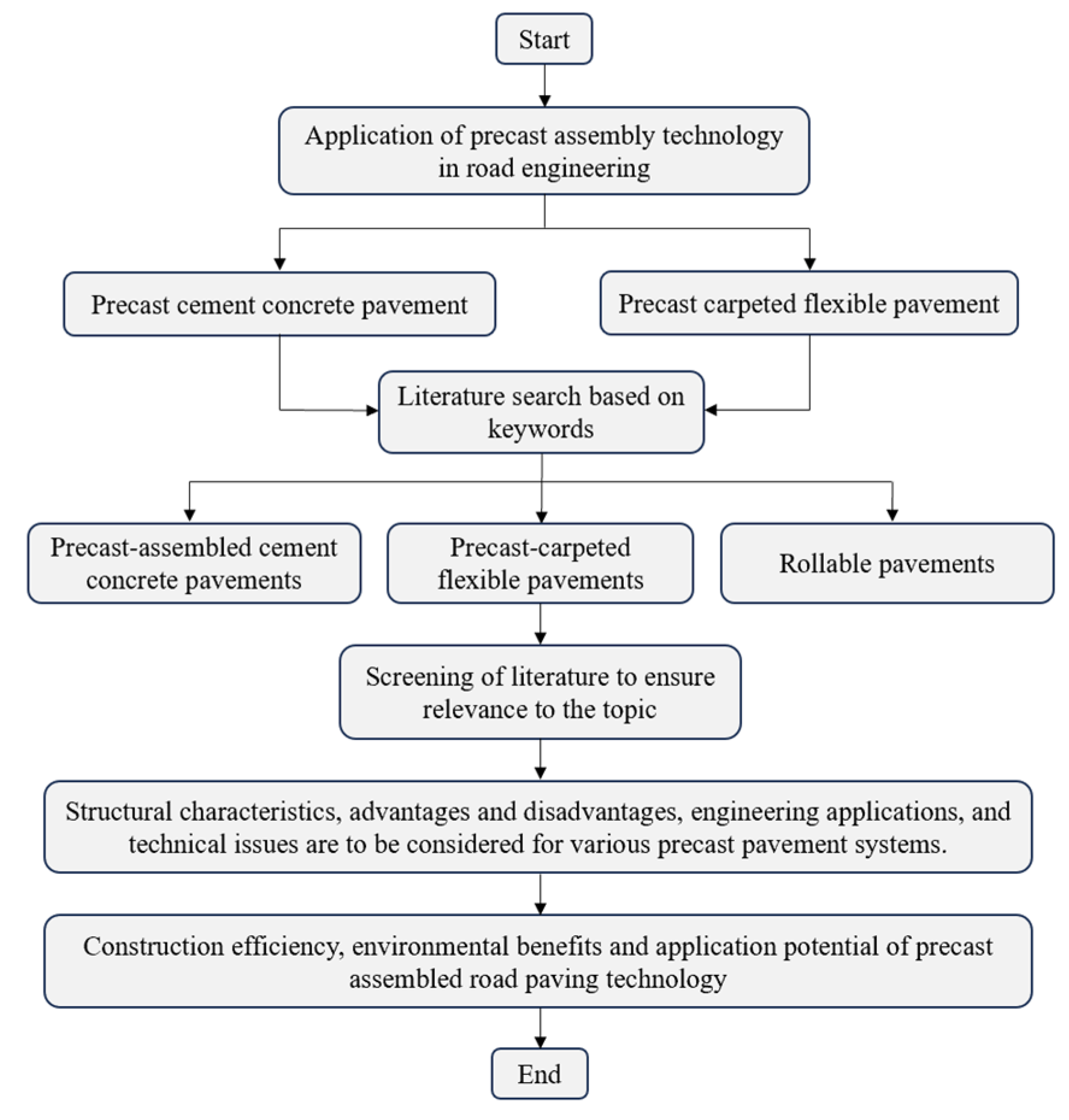
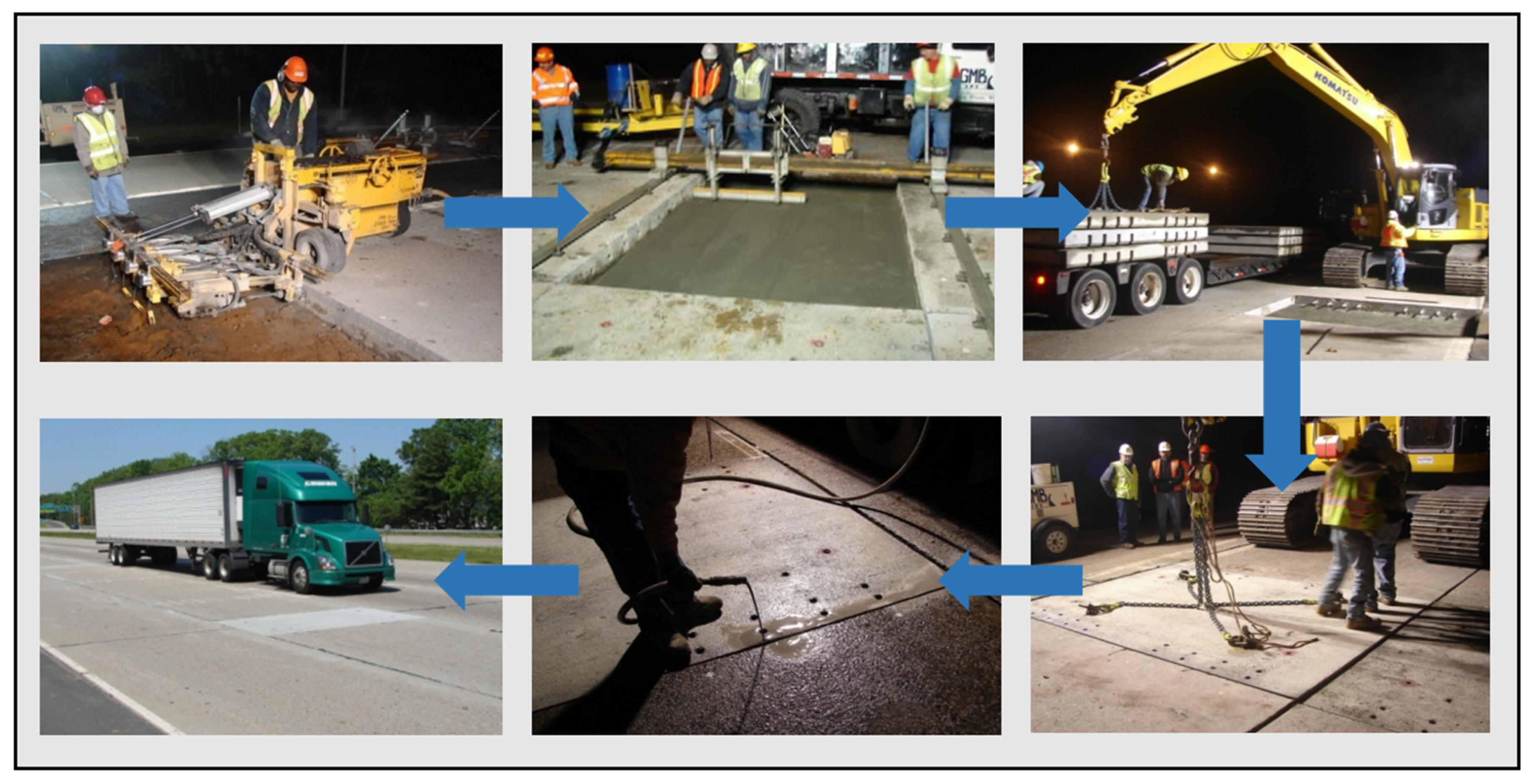


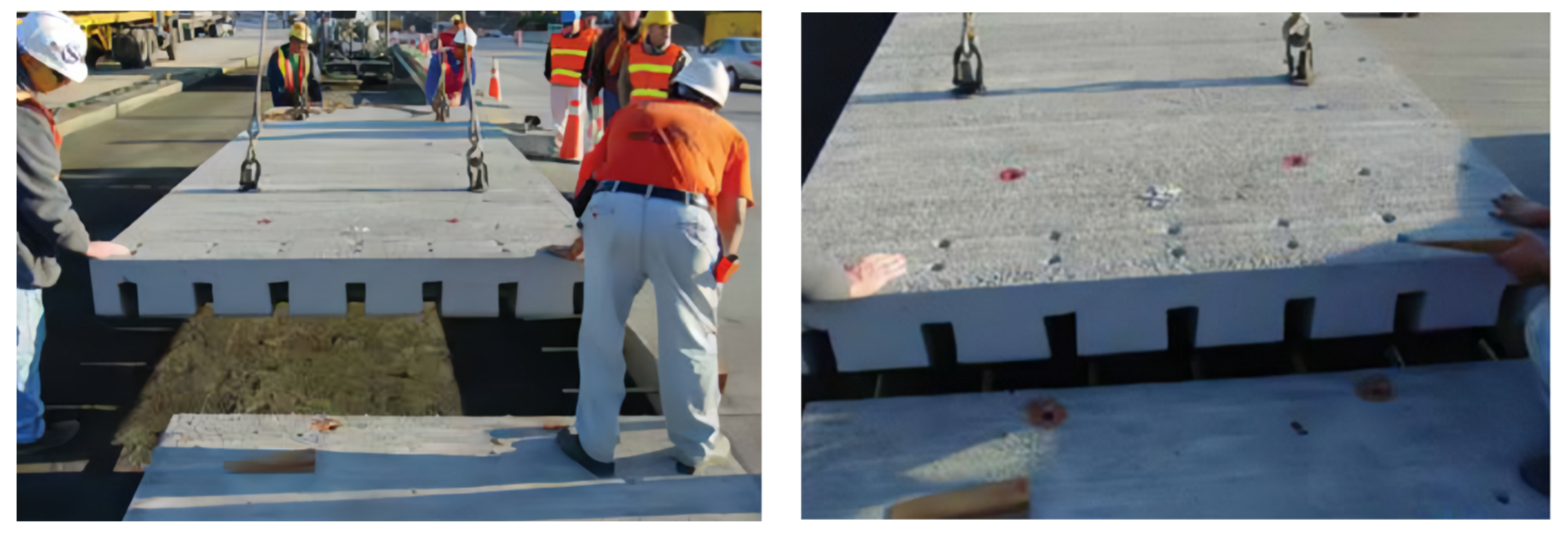



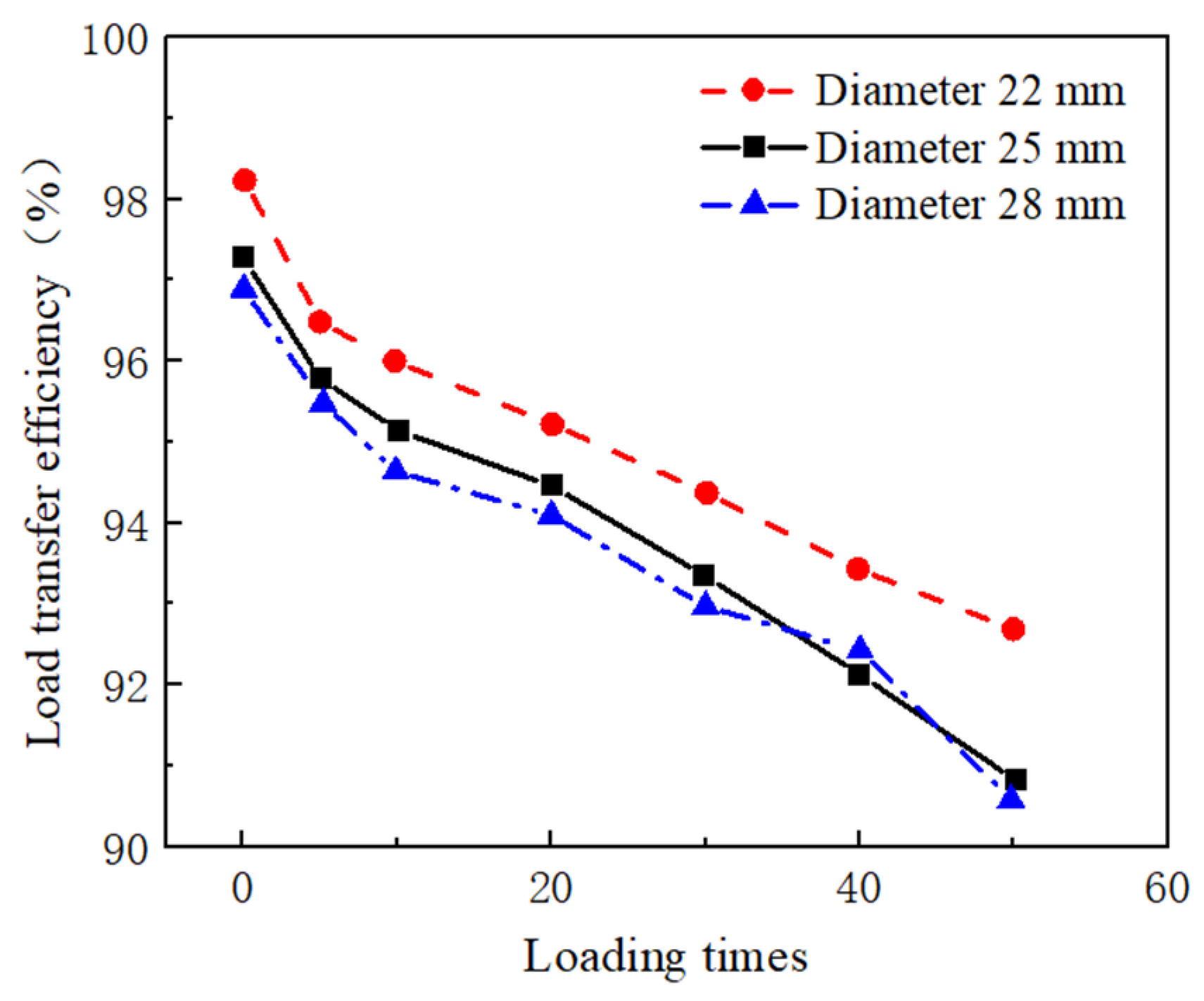


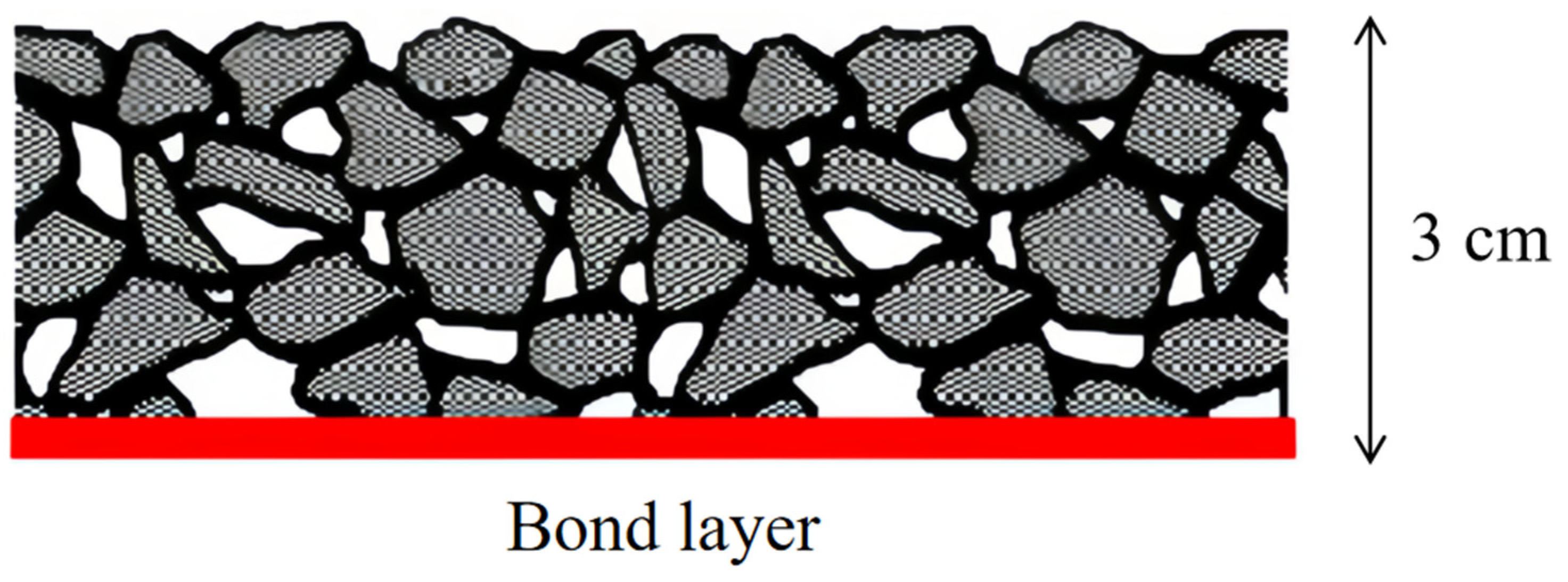
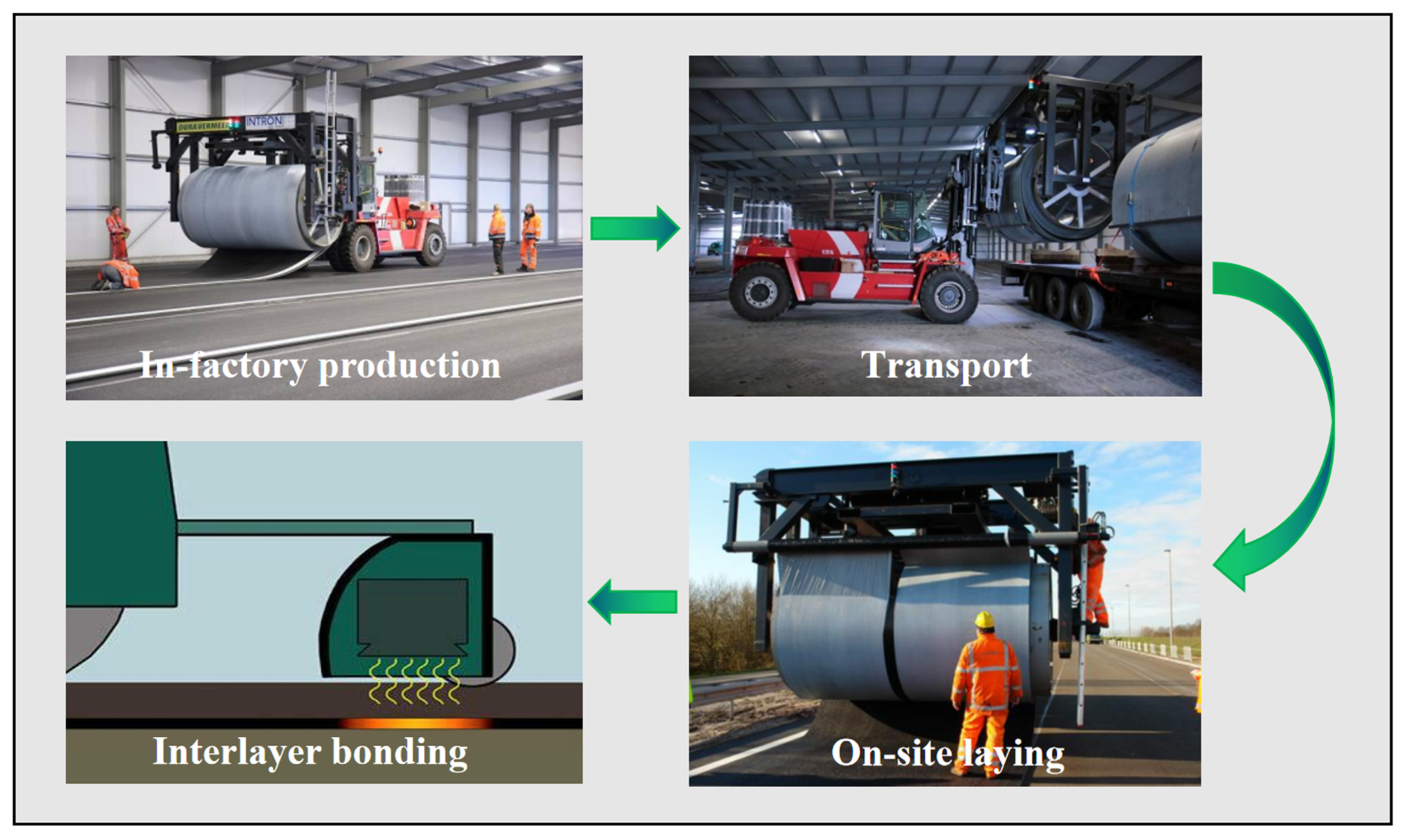
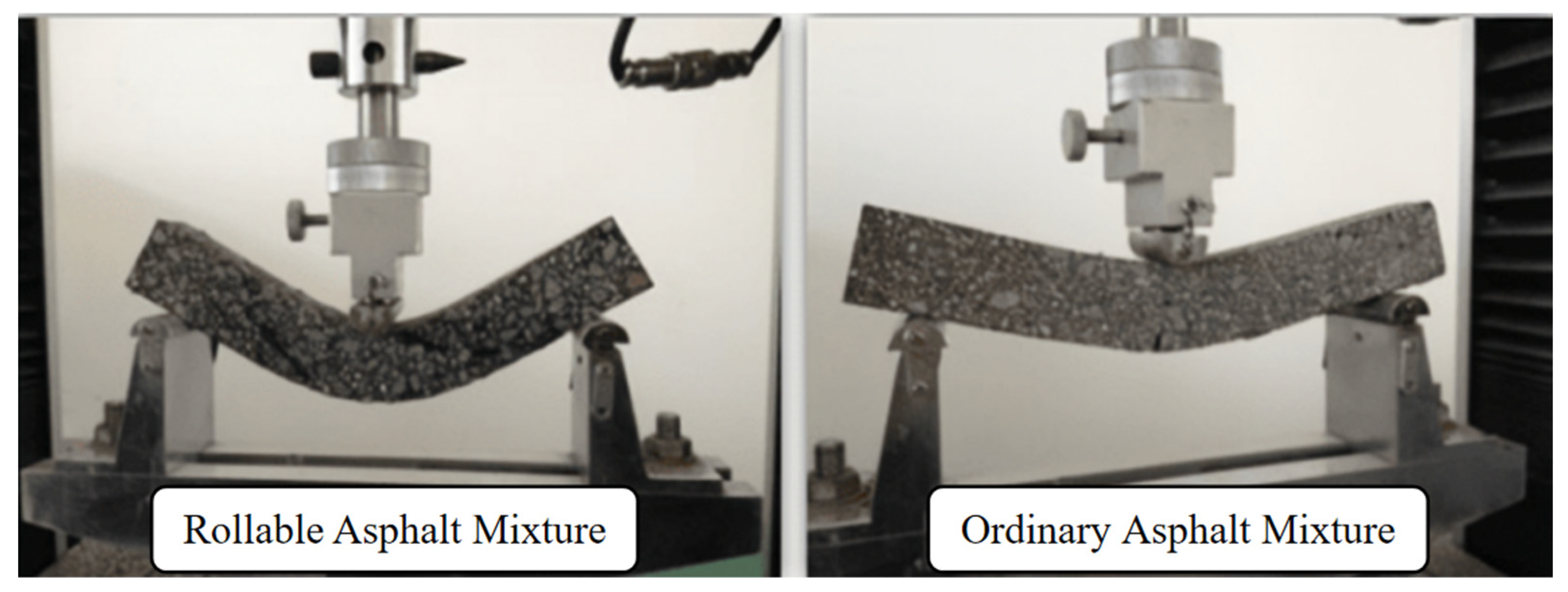


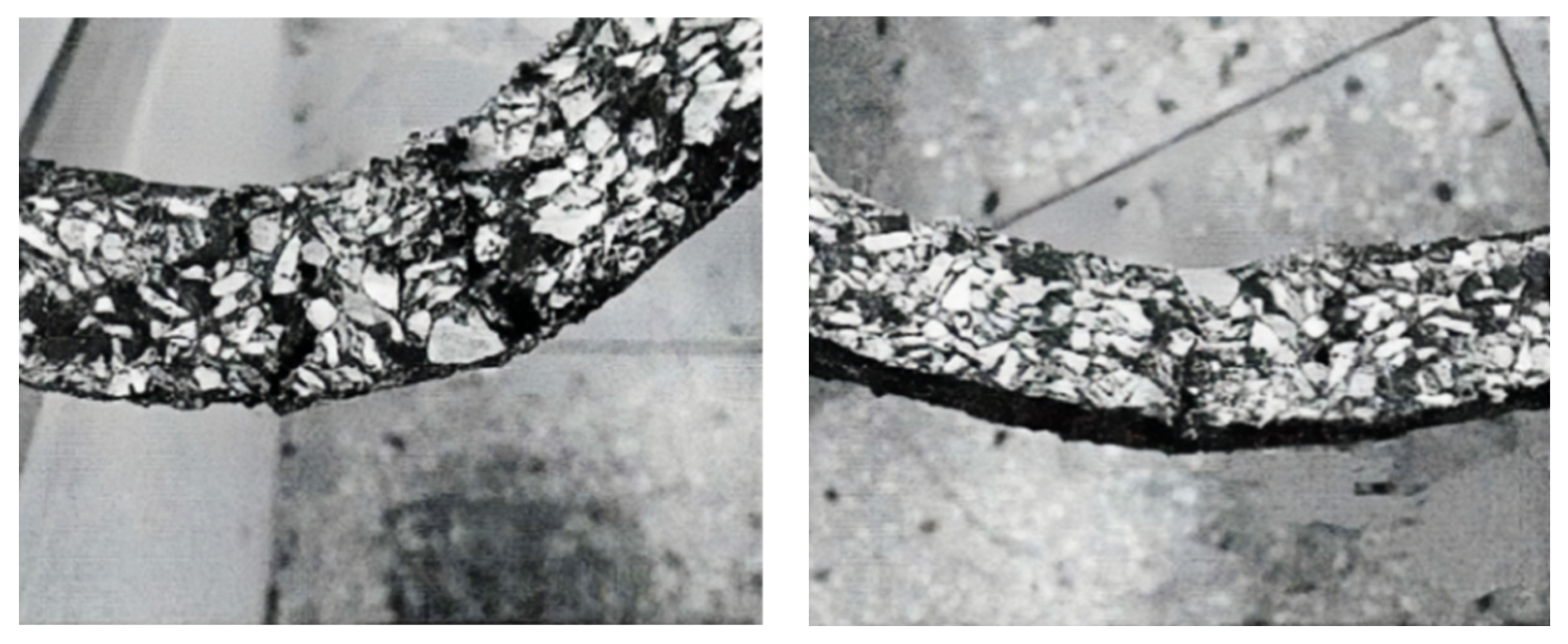
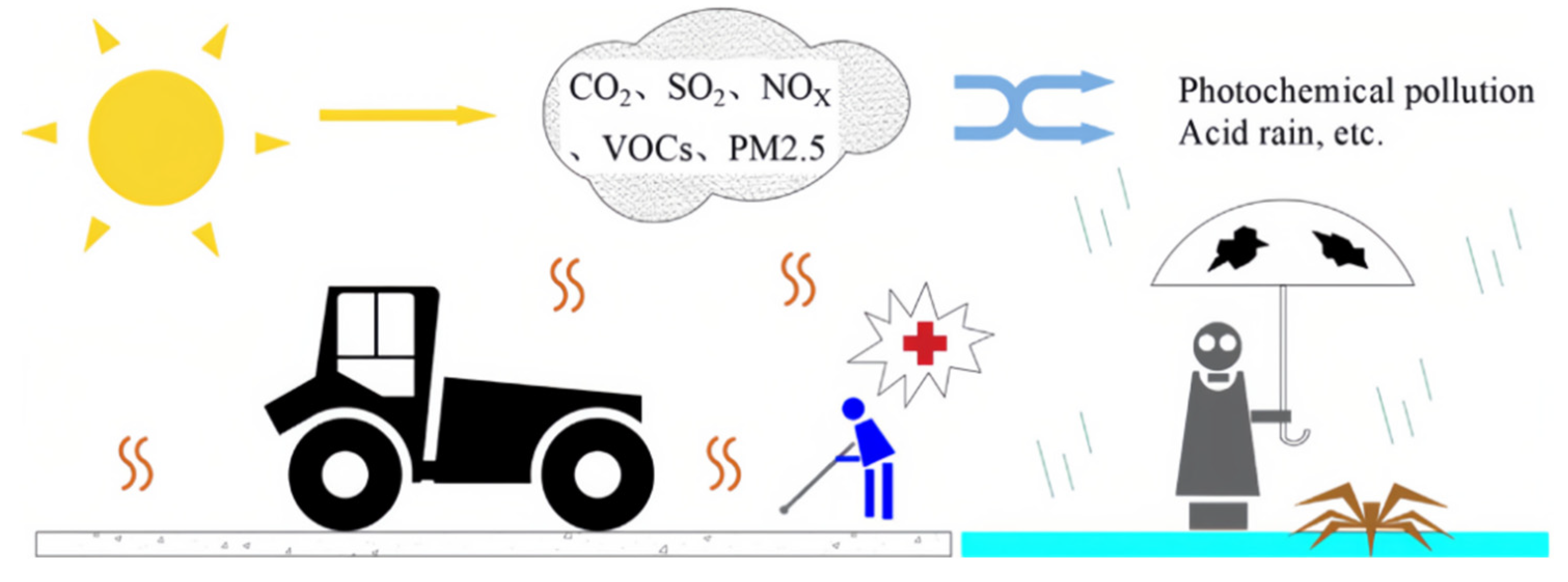
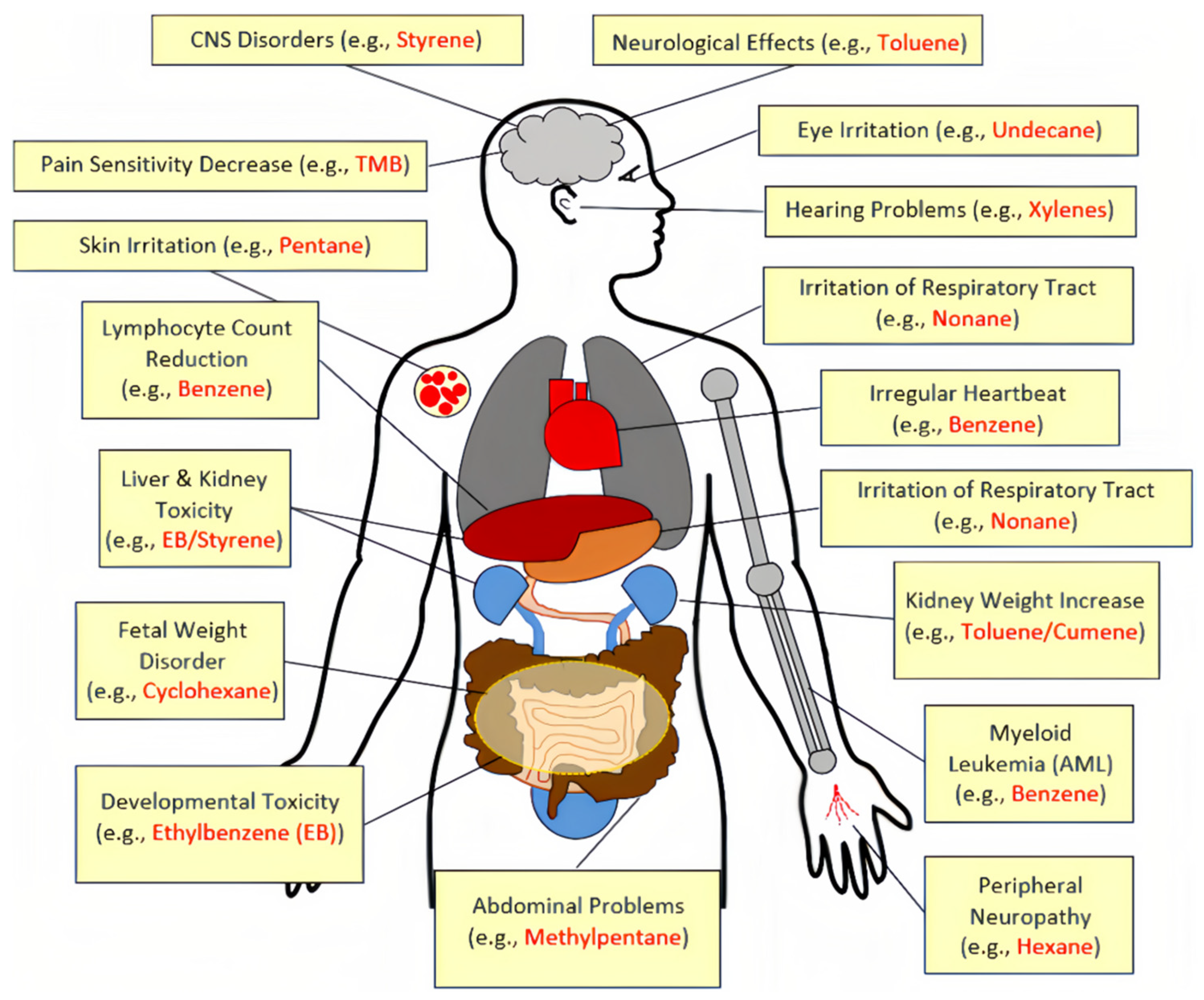

| System Name | Structural Feature | Advantages | Shortcomings |
|---|---|---|---|
| Super-Slab system | One end is fitted with dowel bars, the other end is fitted with notches, and the joints are connected by lower grouting | 85–95% load transfer capacity | The joints of the dowel bars are connected by grouting from the bottom; the grouting quality significantly affects the durability and service life of the pavement |
| Stitch slab system | The post-placed dowel bar is set into the reserved groove of the original road slab or precast slab; the road surface joints are wet upper joints | Load transfer capacity up to 90% | Stress concentration still occurs at the joints due to weak dowel bars; the durability of the filling materials gradually decreases with the environment and driving load |
| Michigan slab system | The dowel bar is set inside the precast panels; the road surface joints are wet upper joints | Satisfactory load transfer efficiency | The durability of filled materials decreases with environmental changes and increased traffic loads |
| JPCP systems | The panels incorporate steel reinforcements; the transverse joint faces of the panels are smooth | No structure-related curling or warping will occur; any in-service cracks due to traffic loading remain tight | At these joints, aggregate interlock cannot be relied upon to transfer loads |
| PPCP systems | Large size but small thickness; lightweight | Low internal stress; high bearing capacity; good capacity of resistance deformation; reduced number of precast pavement joints | High construction costs; complex construction techniques |
| ICPCP systems | A narrow expansion joint exists between the connected panels | Fewer active joints and narrower expansion joints | Lack of systematic structural design and construction guidelines |
| Repair Type | Repair Detail | Time to Complete Repair | Estimated Material Cost (USD) |
|---|---|---|---|
| Rapid-setting cap/aggregate | 254 mm cap 102 mm compacted aggregate | 3.7 h | 1375 |
| Rapid-setting cap/foam | 254 mm cap 102 mm foam | 3.2 h | 6040 |
| Rapid-setting cap/injected foam | 254 mm cap debris 102 mm foam | 3.9 h | 6020 |
| Rapid-setting cap/flowable fill | 254 mm cap 102 mm flowable fill | 3.4 h | 1840 |
| Precast panel/flowable fill | 279 mm panel 76 mm flowable fill | 4.8 h a | 2500 |
| Traditional Portland cement concrete (PCC) | 356 mm PCC | 28 d | 540 |
| Task | Time (min) a | ||
|---|---|---|---|
| Single-Slab Repair | Double-Slab Repair | Quad-Slab Repair | |
| Mark the perimeter of the distressed slab | 5 | 10 | 25 |
| Saw-cutting operations | 10 | 30 | 55 |
| Dowel slot cutting | 20 | 55 | 45 |
| Anchor drilling and installations | 25 | 45 | 85 |
| Attach crane rigging hardware | 0 b | 0 b | 10 |
| Lift distressed section | 10 | 15 | 15 |
| Dowel slot excavation (existing PCC slab) | 20 | 65 | 65 |
| Dowel slot excavation (existing PCC slab) | 15 | 25 | 20 |
| Precast panel placement | 10 | 15 | 35 |
| Compaction (if needed) | 5 | 10 | 25 |
| Removal of flowable fill from dowel slots | 10 | 10 | 15 |
| Placement of joint and dowel sealant | 25 | 45 | 80 |
| Dowel slot finishing | 10 | 15 | 20 |
| Curing | 110 | 110 | 110 |
| Total repair time (min) | 275 | 450 | 605 |
| Total repair time (h) | 4.58 | 7.50 | 10.08 |
| Serial Number | Challenges |
|---|---|
| 1 | Increased cost of constructing PCCP systems in the face of limited government budgets |
| 2 | Rate of installation (production) in the field |
| 3 | Optimizing various PCCP system design features |
| 4 | Ensuring the durability of PCCP systems |
| 5 | Maintaining vertical alignment at joints |
| 6 | Ready availability of nearby PCCP assembly/fabrication plants |
| 7 | Lack of adequate long-term performance history |
| 8 | Lack of best practices in the design, installation, maintenance, and repair of PCCP systems |
| 9 | No well-developed, experienced-based generic specifications on how to use PCCP |
| 10 | General lack of support for improving PCCP technologies from the precast concrete industry |
| 11 | Insufficient technical understanding of the potential of PCCP systems by highway authorities. There is a requirement for technology transfer activities in relation to the following: a. Selection criteria for the application of PCCP systems b. General specifications for the application of PCCP systems c. Design, installation, maintenance, and repair issues related to PCCP systems |
| Thickness of PCFP/cm | Minimum Bending Strain () Technical Requirements for Different Radii of Curvature (mm) | ||||||
|---|---|---|---|---|---|---|---|
| 500 | 625 | 750 | 875 | 1000 | 1125 | 1250 | |
| 3 | 35,000 | 28,500 | 24,000 | 20,500 | 18,000 | 16,000 | 14,500 |
| 4 | 46,500 | 37,500 | 31,500 | 27,000 | 24,000 | 21,000 | 19,000 |
| 5 | 57,500 | 46,500 | 39,000 | 33,500 | 29,500 | 26,500 | 24,000 |
| Thickness of PCFP/cm | Different Radii of Curvature (mm) Correspond to the Minimum Midspan Deflection (mm) at Damage | ||||||
|---|---|---|---|---|---|---|---|
| 500 | 625 | 750 | 875 | 1000 | 1125 | 1250 | |
| 3 | 6.7 | 5.4 | 4.5 | 3.9 | 3.4 | 3.1 | 2.8 |
| 4 | 8.8 | 7.1 | 6.0 | 5.2 | 4.5 | 4.0 | 3.6 |
| 5 | 10.9 | 8.8 | 7.4 | 6.4 | 5.6 | 5.0 | 4.5 |
| Test Section | Wheel Track 0 | Ntot 1 | Average Practical Rut Depth (mm) after N = | |||||||||
|---|---|---|---|---|---|---|---|---|---|---|---|---|
| 1000 | 2000 | 5000 | 10,000 | 20,000 | 35,000 | 50,000 | 70,000 | 100,000 | 125,000 | |||
| 1 | V2D80L | 32,750 | 5.2 | 7.1 | 10.3 | 15.1 | 20.3 | 30.1 | - | - | - | - |
| 2 | V2D45L | 34,600 | 2.8 | 3.1 | 4.3 | 5.1 | 9.5 | 13.3 | - | - | - | - |
| 3a | V1ZOAR MV1ZOA 2 | 20,650 21,500 | 1.5 1.5 | 1.7 2.2 | 4.4 3.8 | 6.7 6.1 | 10.6 9.4 | - | - | - | - | - |
| 3b | V2ZOAMR MV2ZOAM 2 | 19,711 19,675 | 1.5 1.5 | 2.1 2.1 | 4.6 4.2 | 7.2 6.4 | 11.3 9.3 | - | - | - | - | - |
| 4a | V1DABR | 68,700 | 0.8 | 1.6 | 2.3 | 3.7 | 4.8 | 6.3 | 7.1 | 8.2 | - | - |
| 4b | V1DABR | 35,500 | 1.2 | 1.7 | 4.2 | 7.8 | 11.4 | 16.5 | - | - | - | - |
| Rollpave | - | 115,500 | 1.0 | 1.4 | 1.4 | 2.7 | 3.6 | 4.4 | 5.1 | 5.5 | 6.2 | 7.4 |
| Index | Penetration at 15 °C (0.1 mm) | Penetration at 25 °C (0.1 mm) | 5 °C Ductility (mm) | 30 °C Complex Modulus (kPa) | −18 °C Stiffness Change Rate (m) |
|---|---|---|---|---|---|
| Technical requirement | >30 | >60 | >55 | <200 | >0.36 |
| Sieve size (mm) | 13.2 | 9.5 | 4.75 | 2.36 | 1.18 | 0.6 | 0.3 | 0.15 | 0.075 |
| Gradation range (%) | 100 | 90–100 | 40–60 | 26–35 | 20–28 | 16–23 | 13–18 | 10–15 | 8–12 |
| Index | Compression Rebound Modulus (MPa) | Air Void (%) | Voids in Mineral Aggregate (%) | Voids Filled with Asphalt (%) | Asphalt–Aggregate Radio |
|---|---|---|---|---|---|
| Range | 800–1200 | 2–3.5 | 15–20 | 79–89 | 6.5–8 |
| Index | Technical Requirement | Test Method |
|---|---|---|
| Failure stress in bending test at 10 °C (MPa) | >2.5 | T 0715 |
| Failure strain in bending test at 10 °C (με) | >27,000 | T 0715 |
| Failure strain in bending test at −10 °C (με) | >8000 | T 0715 |
| Dynamic stability (1 time/mm) | >2400 | T 0719 |
| Residual stability in immersion Marshall test (%) | >85 | T 0709 |
| Residual stability of freeze–thaw splitting test (%) | >80 | T 0729 |
| Permeability coefficient (mL/min) | <120 | T 0730 |
| RMB% | HMA | PHMA | ||||
|---|---|---|---|---|---|---|
| Maximum Force (KN) | Deflection (mm) | Maximum Bending Strain (με) | Maximum Force (KN) | Deflection (mm) | Maximum Bending Strain (με) | |
| 6.5 | 0.61 | 1.86 | 8370.0 | N/A | N/A | N/A |
| 7 | 0.60 | 1.94 | 8730.0 | 0.26 | 2.47 | 11,115.0 |
| 7.5 | 0.47 | 3.78 | 17,032.5 | 0.30 | 5.80 | 26,122.5 |
| RMB% | HMA | PHMA | ||||
|---|---|---|---|---|---|---|
| Maximum Force (KN) | Deflection (mm) | Maximum Bending Strain (με) | Maximum Force (KN) | Deflection (mm) | Maximum Bending Strain (με) | |
| 6.5 | 0.23 | 6.41 | 28,845.0 | N/A | N/A | N/A |
| 7 | 0.24 | 7.195 | 32,377.5 | 0.13 | 3.79 | 17,055.0 |
| 7.5 | 0.18 | 11.68 | 52,582.5 | 0.18 | 10.23 | 46,035.0 |
| PCFP Technology | Type of Bonding Material | Advantages | Shortcomings |
|---|---|---|---|
| Rollpave technology (Netherlands, 2001–2007) | Polymer-modified asphalt | Can be applied at low temperatures; easy bonding and reversible bonding process; can be paved in slightly curved sections | Large radius of curvature; prone to potholes and poor durability |
| Noise-reducing and slip-resistant carpeted pavement (Germany, 2010) | Cold plastic material | Significant noise reduction | - |
| Precast rollable asphalt pavement (China, 2015) | Polymer-modified asphalt | Can be applied at low temperatures; small radius of curvature | High cost of specialized asphalt binders |
| Carpeted asphalt pavement (China, 2015) | High-dosage (12%) SBS-modified asphalt | Can be constructed at low temperatures; small radius of curvature | High cost of high-dosage SBS-modified asphalt |
| Carpeted pavement (Germany, 2015) | PU | Normal temperature mixing; environmental protection; ultraviolet aging resistance is significantly improved | - |
| Rollable pavement based on short-fiber fabric-reinforced concrete (Germany, 2016) | Short-fiber fabric-reinforced concrete | Used to repair winter damage to German pavements | - |
| Precast flexible conductive composite overlays (China, 2018) | Epoxy resin | Active snow melting and de-icing; small radius of curvature; very thin | Requires connection of power supply and overcurrent protection |
| Curlable noise-reducing asphalt pavement (China, 2019) | Composite-modified asphalt | Good noise-reduction performance | Composite-modified asphalt preparation process is complicated |
| Curlable epoxy wear layer (China, 2021) | High-elasticity and high-toughness epoxy resin | Small radius of curvature | High cost of bonding materials |
| Self-heating and self-bonding carpeted asphalt pavement (China, 2022) | SBS-modified asphalt | No need to spread tack coat on the site | The overall structure of self-heating and self-bonding carpet asphalt pavement is complex; cumbersome production technology and process |
| Rollable asphalt pavement (Iran, 2023) | Composite-modified asphalt | High- and low-temperature performance, viscosity, and fatigue life of modified asphalt are improved | - |
Disclaimer/Publisher’s Note: The statements, opinions and data contained in all publications are solely those of the individual author(s) and contributor(s) and not of MDPI and/or the editor(s). MDPI and/or the editor(s) disclaim responsibility for any injury to people or property resulting from any ideas, methods, instructions or products referred to in the content. |
© 2024 by the authors. Licensee MDPI, Basel, Switzerland. This article is an open access article distributed under the terms and conditions of the Creative Commons Attribution (CC BY) license (https://creativecommons.org/licenses/by/4.0/).
Share and Cite
Tan, Q.; Zhu, H.; Yang, S.; Yang, X.; Ou, L. Precast Assembled Road Paving Technology: Progress and Prospects. Materials 2024, 17, 2245. https://doi.org/10.3390/ma17102245
Tan Q, Zhu H, Yang S, Yang X, Ou L. Precast Assembled Road Paving Technology: Progress and Prospects. Materials. 2024; 17(10):2245. https://doi.org/10.3390/ma17102245
Chicago/Turabian StyleTan, Qiqi, Hongzhou Zhu, Song Yang, Xiaosi Yang, and Li Ou. 2024. "Precast Assembled Road Paving Technology: Progress and Prospects" Materials 17, no. 10: 2245. https://doi.org/10.3390/ma17102245




